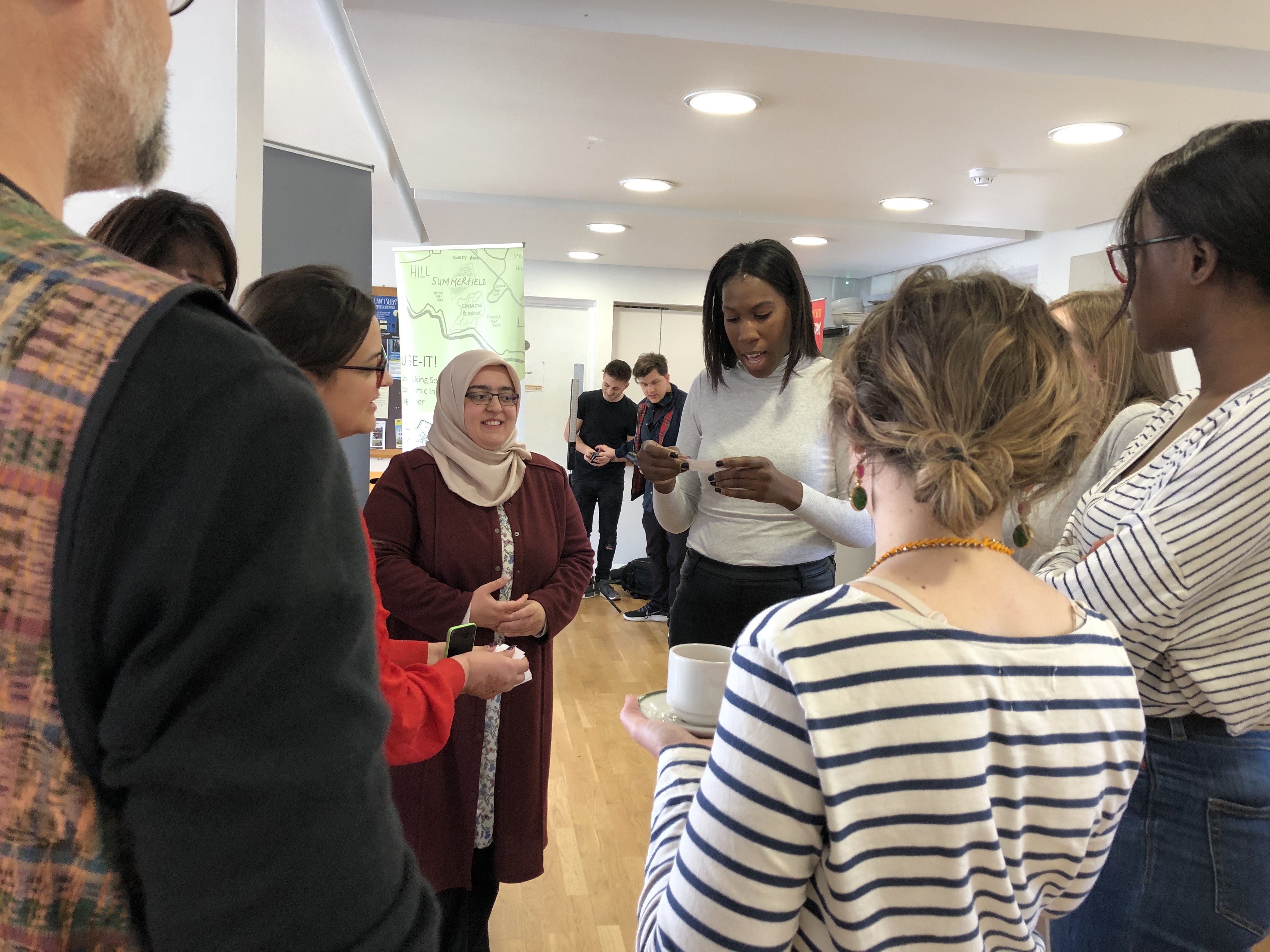Here Sarah Crawley and Simon Veasey of iSE describe their experiences of running events as part of the USE-IT! social enterprise work.
Can you talk us through the experience of developing such programmes in Digbeth, with the USE-IT! Context of Ladywood? What have you learned through that?
Sarah: ISE has developed a formula for networking events which means we work to develop a place based list of social enterprises initially to understand if there is a market for the ‘network’. We then ask them if they would like to get involved and have an initial session where we explore with the group potential topics for future sessions. The network sessions are held bi-monthly and always provide time for pitching around business needs e.g. promotion of new service or product, some useful ‘micro learning’, information on possible opportunities and an opportunity to network. We find that this formula works and that we get good attendance. Attendees also report increased business as a result of attending.
Simon: The supporting infrastructure wasn’t there or as developed in Ladywood as it was in Digbeth. I believe we initially made the assumption that “social enterprise” would be immediately understood by local people. Our first few awareness sessions were really poorly attended and it wasn’t until we marketed them significantly differently that we started to get take up. If we couldn’t get people to a “social enterprise awareness” session we tried a different tack using our partners in Smethwick CAN to organise a community event around food and food poverty. CAN led and we brought social enterprise/community business in at the end of the session as a potential solution that appeared to work well, so other partners ran a programme of similar events looking at food, working from home and retail and covering themes of creativity, music, and art.
What are the key factors to getting people to attend and engage in such events and programmes?
Simon: Clearly, it’s about getting the getting message right. We worked with ‘trusted’ local organisations to advertise our events and programmes as we realised they had the best reach into some of the diverse communities. It had to be local, we soon realised that people generally wouldn’t travel. However, when we ran Fuse startup sessions in the locality they were not as well attended as our programmes run from the Digbeth Hub. Flexibility was also important in that some of the local people required support that didn’t fit with our FUSE model so we supported a number of individual entrepreneurs with bespoke support and access to mentoring. Without this flexibility we would have potentially had a greater drop out from the programmes due to a lack of suitability.
How have attendees and participants benefited in unexpected ways, and how have you been able to embrace that?
Simon: We have leveraged significant additional funds (£243k) into the local area by supporting local organisations to apply for funding or win contracts, money that may not have been in the local economy without USE-IT! We have supported 41 local entrepreneurs to start up their businesses and supported 39 existing organisations to grow. New consortiums now exist as a result of WP6 to bring social enterprises together and build capacity around tendering for larger pieces of work. Organisations have benefitted through mentoring, 36 mentors have been recruited and trained during the project and to date 25 organisations have received mentoring.
For a further discussion on how to organise such events, you can contact Sarah Crawley Sarah.Crawley@i-se.co.uk

